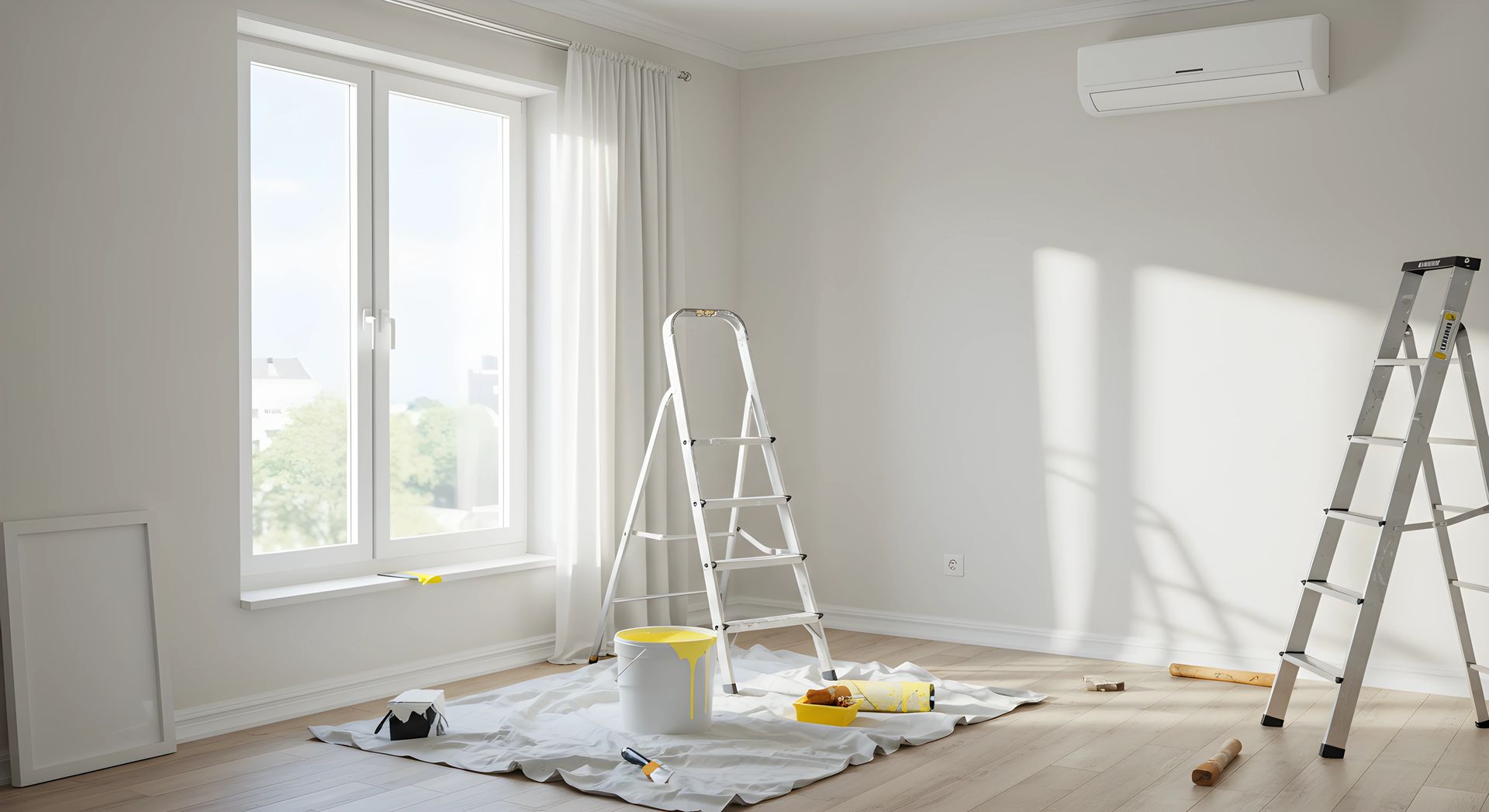How Often Should You Repaint Your Home? Signs It’s Time for a Fresh Coat
Whether inside or out, your home’s paint does more than just look good. It protects surfaces, enhances curb appeal, and can even boost property value. But how often should you repaint? And what signs tell you it's time?
Repainting too soon wastes time and money, but waiting too long can result in bigger, more expensive problems. Let’s break down the lifespan of your home’s paint and the key signs that a fresh coat is overdue.
How Often Should You Repaint the Exterior?
Your home’s exterior faces a daily battle with the elements. Sun, rain, wind, and fluctuating temperatures all take a toll on the paint. Over time, this exposure causes fading, cracking, and peeling—leaving your home vulnerable to moisture and damage.
So, how often should you repaint? It depends on the material and climate.
Wood siding
– Every 3 to 7 years, or every 4 years if stained.
Aluminum siding
– About 5 years before fading sets in.
Stucco
– Typically 5 to 6 years, but cracks may require earlier touch-ups.
Brick
– If painted, expect to repaint every 10 to 15 years.
Vinyl siding
– Usually 10 years or more, but fading can happen sooner.
Your location also plays a big role. Homes in areas with intense sunlight, heavy rain, or harsh winters may need repainting sooner. If you see peeling, cracking, or fading, don’t ignore it—taking action early can prevent costly damage.
How Often Should You Repaint the Interior?
Interior walls aren’t exposed to the weather, but they still experience wear and tear. High-traffic areas get scuffed up faster, and moisture-heavy rooms like kitchens and bathrooms need fresh paint more often.
Here’s a general timeline for interior repainting:
- Living rooms & dining rooms – Every 5 to 7 years, depending on usage.
- Hallways & entryways – Every 2 to 4 years (these areas take the most abuse).
- Kitchens & bathrooms – Every 3 to 4 years due to moisture and stains.
- Bedrooms – Every 5 to 8 years, but kids’ rooms may need repainting sooner.
- Ceilings – About 10 years, unless you notice stains or discoloration.
If your walls look dull, dirty, or outdated, it might be time for a refresh. A new coat of paint doesn’t just improve appearance—it can also make a room feel brighter and more welcoming.
Signs It’s Time for a Fresh Coat
Not sure if it’s time to repaint? Look for these warning signs:
1. Fading Colors
Sunlight gradually breaks down paint, causing colors to lose vibrancy. Darker shades usually fade faster than lighter ones. If your home’s exterior or interior walls look dull and lifeless, a fresh coat can restore their original beauty.
2. Peeling, Cracking, or Bubbling Paint
This isn’t just an aesthetic issue—it’s a red flag. Peeling or bubbling paint, especially on exterior walls, indicates moisture infiltration. If ignored, this can lead to rot, mold, or structural damage. Don’t wait until the problem worsens.
3. Chalking on Exterior Walls
Run your hand over your home’s exterior. Does it leave a white, powdery residue? That’s chalking, a sign that the paint is breaking down. It won’t protect your home much longer.
4. Stubborn Scuffs and Stains
Walls in high-traffic areas take a beating. If scrubbing no longer removes stains, dirt, or scuff marks, new paint is the best solution.
5. Outdated or Unappealing Colors
Trends change, and so do personal tastes. If your home is still rocking a 1990s beige or an outdated shade of green, a modern paint job can give it a fresh, updated look.
6. Preparing to Sell Your Home
Thinking of putting your home on the market? A fresh coat of paint is one of the easiest and most affordable ways to enhance curb appeal and draw in potential buyers. Neutral, well-maintained walls make a home feel cleaner and more inviting—two big selling points.
Why Repainting Matters
Painting isn’t just about looks. It protects your home from wear and tear, prevents moisture damage, and can even improve indoor air quality. High-quality paint can resist mildew, reduce dust accumulation, and create a more durable surface that stands up to daily life.
Ignoring peeling or faded paint can lead to more costly repairs down the road. Exterior paint serves as a protective shield against bad weather conditions—when it starts to fail, your home becomes vulnerable to rot, water damage, and other structural issues.
When to Call the Professionals
While some homeowners take on small painting projects themselves, a professional painting service ensures long-lasting results. Pros know how to properly prep surfaces, choose the right type of paint, and apply even, streak-free coats. They also save you time and effort—especially for large or complex jobs.
If your home is showing signs that it’s due for a repaint, don’t wait. A well-maintained paint job doesn’t just enhance your home’s beauty—it protects your investment.
Ready to give your home a fresh new look? Contact a professional house painting service
today and get started!



